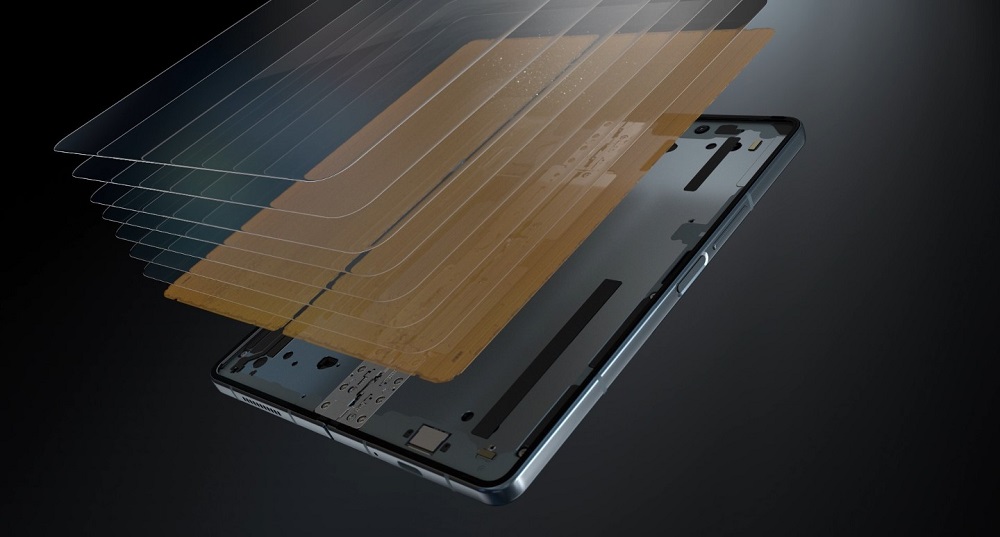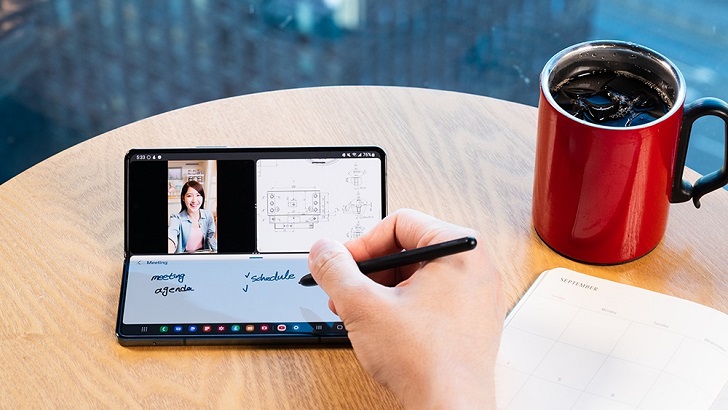[Q&A] Engineering Innovation: How a Decade of Innovation Resulted in Samsung’s Z Flip4 and Fold4
on October 6, 2022
At the latest Galaxy Unpacked event, Samsung Electronics unfolded a new future of mobile possibilities with the release of the new Z Flip4 and Z Fold4 — representing a decade-plus journey to reimagine the smartphone to unlock new experiences for users.
As one of the earliest smartphone makers, Samsung recognized that a true innovation does not come solely from the advance in technology itself. True innovation unlocks new benefits that transform consumers’ daily lives and by democratizing the innovations for all.
To help users understand more about the foldable technology from an engineering perspective, Samsung Newsroom sat down with Dr. Won-Joon Choi, Executive Vice President, Head of Flagship Product R&D Team and Technology Strategy Team at Mobile eXperience Business, Samsung Electronics.
As a leader of Samsung’s flagship product R&D team, the Q&A below includes some of the latest breakthroughs and exclusive insights on the fourth-generation of Galaxy Z series.
Read on to learn more about Samsung’s goals for the Z Flip4 and Z Fold4 and the process behind the foldable technology that’s as dynamic as its engineering team.

Q: What is your approach to improving the hardware design of Samsung’s lineup of foldables?
Not only have we accumulated engineering knowledge from the three previous generations of foldables, but we’ve also received customer feedback along the way that has been extremely valuable to advancing the Z Fold4 and Z Flip4. When we address customer feedback, most of the time, we must overcome technological limitations, which require new approaches when compared to conventional bar-type smartphones. To bring foldable technology to millions and make the foldable device category mainstream, we focused on the following areas: enhancing durability for everyday use, providing perfect balance of on-the-go experiences and optimized large-screen experiences and maintaining the ultimate performance which is the fundamental of the Galaxy smartphones.
Q: How does the updated hinge in Z Flip4 and Z Fold4 make everyday use more comfortable for users?
For Z Flip, our users wanted the form factor to be even more compact. For Z Fold, our users liked to leverage both the Main Display and Cover Screen and accomplish tasks one-handed.
So, our solution was to redesign the hinge on both devices. Our previous Hinge design was an engineering feat and enabled the foldable experience we see today. However, we knew internally that we would need to simplify the design to manufacture it at an even greater scale and meet the needs of the mainstream users.
By creating this new hinge, we could further slim down the Z Flip4 design to make it even more compact. It also allowed us to modify the dimensions on Z Fold4. Now, the device has a slightly wider and slightly shorter Cover Screen, enabling a more comfortable experience while typing on the go and doing other tasks on the Cover Screen. While these under-the-hood changes may feel incremental, they go a long way in the consumer experience.
Beyond offering users comfortable use, redesigning the hinge also brings benefits to both manufacturing and longevity. We reduced the number of components by 60%. This is a feat in itself because this means that fewer components could potentially need repair, and it’s easier to manufacture at a larger scale.
Q: Z Flip and Z Fold users love creating content with high-quality cameras. Do the latest devices offer users any new experiences or features?
We took care to upgrade the cameras in both devices. We wanted to give our consumers the advantages of Nightography, first introduced on S22, on both Z Flip and Z Fold. However, this required adding larger camera lenses to bring in more light. By redesigning the hinge, we were able to secure more space for the component that could fit our new camera systems without making the device thicker.
Q: How has the fourth generation Z series been made lighter? How will this benefit the end user?

Over the past several generations, we have been focused on shaving down the weight of Z Fold series. We know this is a critically important factor to get right on foldables because the value proposition of these devices is to offer new experiences without compromise.
This year, we focused on reducing the weight of the display and hinge, resulting in a device that weighs 263 grams, which is 8 grams lighter than Z Fold3 and nearly 20 grams lighter than Z Fold2 (282g). This subtle yet continuous refinement makes a big difference over generations.
To accomplish this, we restructured and optimized number of internal components including display and hinge. Reducing the display weight contributed much to overall weight. We redesigned the structure and materials of the layers and by doing so, the display of Z Fold4 is not only 15% lighter than the previous generation but also 45% stronger. Combined with the redesigned hinge, which is 21% lighter than the one used on Z Fold3, Z Fold4 offers a noticeable difference in weight. This results in a more comfortable, portable and convenient user experience.
Q: Samsung has received feedback in the past regarding Z Flip’s battery life. How has the battery life been extended in the Z Flip4?
One of the biggest pieces of feedback we received from Z Flip3 was about its battery life. Since a foldable smartphone is divided into two parts and joined together with a hinge, naturally, it has limitations to its internal space when compared to conventional bar-type smartphones. However, by making the hinge slim and reconfiguring internal mechanical design, it allowed us to secure extra space for bigger battery. Together with more efficient performance, users are now able to enjoy longer battery life compared to previous generation.
Q: Galaxy users care about having an immersive viewing experience on their devices. How and why has the Under Display Camera (UDC) on Z Fold been improved in this latest iteration?
We created the UDC technology to provide an uninterrupted viewing experience on the 7.6-inch Main Display. This was the first of its kind on a foldable, and with Z Fold4, we were able to make the experience even better.
We reconfigured the pixels on top of the camera to improve the perceived resolution and thus make the camera even more unnoticeable. We changed the sub-pixel arrangement from a cluster-type to a scatter-type, increasing grid pattern visibility and improving the readability of texts. As a result, watching content, playing games and reading are uninterrupted on the Main Display.
Q: The key element to Samsung’s foldables is Ultra Thin Glass (UTG). Can you tell us more about how you created this durable material that can be folded hundreds of thousands of times?
When we developed the first generation of the Galaxy Fold, we made the foldable screens using flexible polyimide. But we knew we would need to make something more durable to make foldables mainstream.
This is how the first Ultra Thin Glass was created. It is a highly complex material that has to come through countless steps from the raw material. We first receive sheets of thin glass, which are thinner than a single human hair, from our partners before they are coated and cut to precise dimensions. Then, we undergo a delicate process of smoothing and polishing the glass surface. This ensures the material is structurally sound and ready for installation. Finally, they are given a strenuous durability test before being added to a Z series device.
Each step has been refined every year to get us where we are today, producing millions of components for our devices durable enough to give our users peace of mind in their everyday usage.



